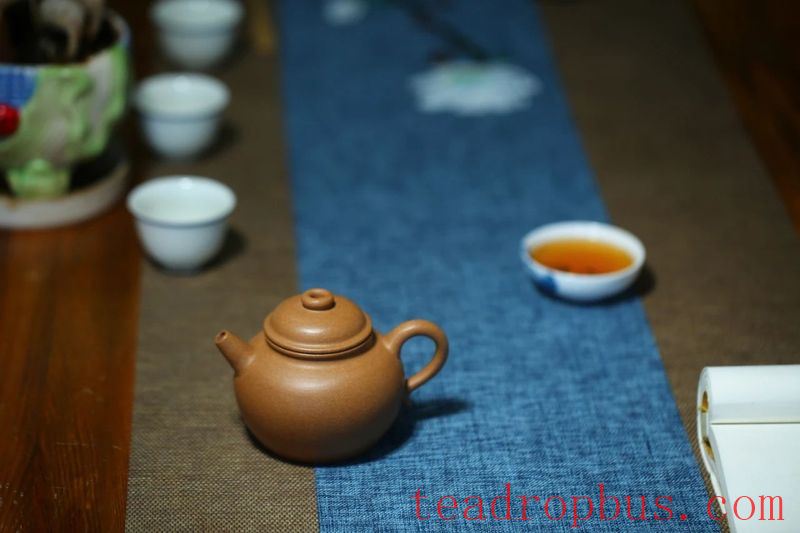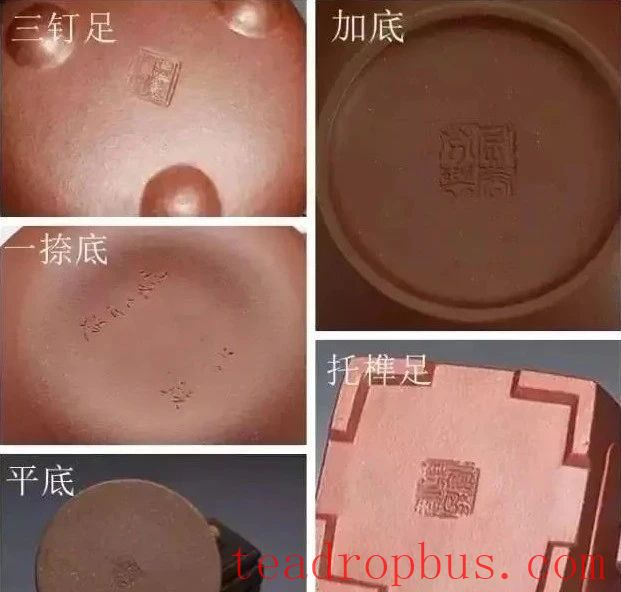Viewing a Teapot is like viewing a person. To appreciate the spirit and charm of a teapot, one must observe its “facial features,” which include the spout, lid knob, handle, water outlet, and base. These elements seem separate but are organically combined into a whole, complementing each other. Today, let's explore the artistic variations of these “facial features” in purple clay Teapots.
Spout
The human eye's flow when appreciating a Purple Clay Teapot ultimately rests on the spout, making it the face of the teapot.
The types of spouts can be divided into:
– One-bend spout, resembling a bird's beak, often referred to as a “beak spout” by potters.
– Two-bend spouts are commonly used on ordinary teapots, with a larger base for smooth water flow.
– Three-bend spouts and straight spouts are more common, suitable for both large and small teapots. The straight spout is also known as a duckbill spout, typically used for Tea sets, Coffee sets, and milk cups.

What makes a good spout?
The shape should suit the curve of the water flow. The length and thickness of the spout, as well as its placement on the body, must be appropriate. The inner wall of the spout must be processed smoothly and evenly, and the water outlet holes must be dense and clear. Most importantly, the water flow should be smooth, and there should be no dripping after pouring.
Water Outlet
Purple clay teapots have three types of water outlets: single hole, mesh hole, and ball-shaped hole.
What makes a good water outlet?
This question is difficult to answer definitively, as it depends entirely on personal preference. Some people prefer a single hole, while others prefer multiple holes. Ultimately, what matters most is that you find the type that suits you best. Of course, regardless of the type, it must be easy to use.

When using a purple clay teapot with a single hole or mesh hole, adjust your mindset and avoid rushing. Pour the tea slowly and steadily, gradually lifting the teapot until all the tea is poured out. If you maintain a relatively steady pouring method, the tea leaves should remain at the bottom of the teapot rather than piling up at the mouth.
Lid Knob (The “Nipple”)
The knob on a purple clay teapot's lid is called the “nipple” in Yixing dialect.
What makes a good lid knob?
Firstly, the “nipple” of a purple clay teapot can vary widely in form, but no matter whether it is round, ring-shaped, mushroom-shaped, peach-shaped, bamboo knot-shaped, or in the form of an animal such as a tiger, lion, or fish, the minimum requirement is that it is easy to grip.
Secondly, due to its special position, it often serves as the finishing touch. The size of the “nipple” in relation to the body of the teapot is similar to the proportions of the human body. A too-large “nipple” can make the teapot seem top-heavy, while a too-small “nipple” can make the entire teapot appear shrunken and lacking in spirit.
Finally, the “nipple,” located at the top of the teapot, plays a crucial role in stabilizing the overall design. It can complement the shape of the teapot, whether curved or straight, solid or hollow, harmonizing with the rest of the design and making a large teapot visually light and lovely. Even if the center of gravity shifts upward and the base becomes smaller, the teapot will still appear stable.

Handle
The handles of purple clay teapots come in three forms: straight handle, horizontal handle, and lifting handle. Lifting handles can be further divided into two types: hard lifting handles and soft lifting handles. Different handle designs must match the spout and body, considering aesthetics, but the ultimate goal is always the same: ease of grip and use.
How to determine if a handle is convenient to hold?
Apart from the curvature and thickness of the handle, the fulcrum of the handle should be located (or close to) the center of gravity of the teapot when filled with water. To test this, fill the teapot about three-quarters full, then lift it horizontally and slowly pour out the water. If it feels comfortable, it is well-designed. Conversely, if you need to grip it tightly or if holding it feels unstable, it is poorly designed.
Another method is to evaluate the teapot by seeing how much water it can hold without tipping over, often referred to as the “half liter test.”

Base
The base is another essential component of the overall design. As part of the whole, the base must be compatible with the body of the teapot. The size and shape of the base directly affect the appearance and stability of the teapot when placed down.
There are several types of bases for purple clay teapots:

- Flat base – also known as “self-base” or “cut base,” shaped like an inverted bowl.
- Pinched base – because purple clay teapots are unglazed, there is no risk of sticking during firing. This base style saves time and effort in production, providing a clean and neat finish to round-bodied teapots, with a simple and elegant look.
- Added base – a foot ring is added during the shaping of the teapot body and joined using clay slurry, also known as “excavated base.”
- Nail base – inspired by the tripod feet of bronze vessels, nail bases support the teapot, providing stability and a sense of lightness.
If there are any copyright issues, please contact us to remove them.